A.A.3 | Sensing and Magnitude
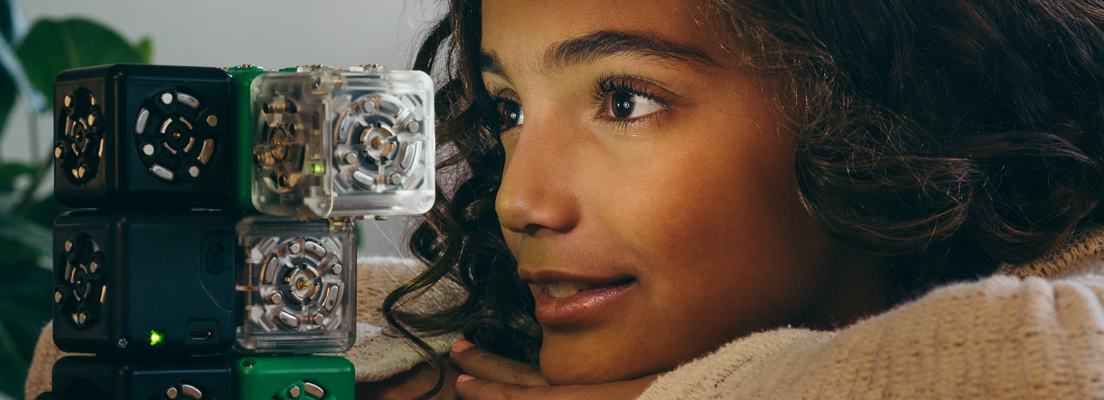
Created by: Modular Robotics
Lesson Overview:
In this lesson, students will explore sensory magnitude input to look more closely at how the magnitude of a sense has an effect on the behavior of their robot. Students will continue to investigate the understanding of how complex systems are made up of smaller parts.
They will also investigate properties and characteristics. Sorting, classifying, and categorizing play an important role in science allowing scientists to communicate using a standardized, or agreed upon, set of objectives, or rules. This will be essential in the design and building of robots as there are a multitude of attributes a robot can possess, and there are a number of tasks a robot can perform. By breaking down the functions of robots, students will be better able to plan and problem solve as they design, build, and perfect their robots to solve problems.
The Basics:
Ages: 13 – 17 years (grades 7-12)Time: 30-45 minutes
Prep Time: 5 minutes
Lesson Goal (for the educator): To allow students to see how the magnitude of a sense effects the behavior of their robot and to investigate categorizing properties of robots.
Lesson Objectives (for the students): I will analyze how the magnitude of the input sense effects output behavior. I will be able to categorize properties of robots.
Essential Questions: How does the magnitude of sensory input effect the behavior of the robot? How does testing my robot allow me to draw a conclusion?
21st Century Skills: Creativity and Innovation, Critical Thinking and Problem Solving, Communication and Collaboration
Concepts: Scientific method, magnitude of sense, emergent behavior, prediction, testing
Vocabulary: Emergent behavior, magnitude, analyze, synthesize, conclusion, properties, characteristics, relations
Required Cubelets: Distance, 2 Drive, Battery, Brightness, Flashlight, Rotate, Passive, Inverse, Blocker, Knob – enough for each group of 2-5 students
Additional Materials: Student Robotics Journals, a flashlight and a tent (see Educator Information Sheet)
The Standards:
ISTE: International Society for Technology EducationCreativity and Innovation 1.b, 1.a, 1.c, 1.d Communication and Collaboration 2.d Research and Information Fluency 3.a, 3.d Critical Thinking, Problem Solving, and Decision Making 4.a, 4.b, 4.c, 4.d Technology Operations and Concepts 6.a, 6.b, 6.c, 6.d
CCSS: Common Core Standards
ELA-Literacy.W.7.10, W.8.10, W.9-10.10, W.11-12.10
NGSS: Next Generation Science Standards
MS-ETS1-4
Prior Knowledge Necessary for the Student:
Exploration of Cubelet behavior, the scientific method, and data collection.If no prior knowledge: Lesson A.A.2
A basic understanding of properties and characteristics and the importance of categorizing in the field of science
If no prior knowledge: Lesson A.M.6
Prior Knowledge for the Educator:
This is an opportunity for students to investigate how the magnitude of the stimuli effects change in the behavior of a robot. Students will learn new ways to control that behavior. As students continue to explore, they will deepen their understanding of emergent behavior and how the behavior of the robot changes in relationship to the magnitude of sensing/input.Educator Tips:
You may want to review properties and characteristics and how your students might categorize the different functions and behaviors of the robots they have been building.Preparation:
- Divide the class into groups of 2-5 students
- For each group, place in a container the Cubelets they will need along with a flashlight and a tent.
Lesson:
Introduction:
Time: 2-3 Minutes“In our last lesson you got a chance to build robots using many different Sense, Think, and Act Cubelets. Today we will look more closely at how to use the Knob cube, and we will talk about how categorizing our robots may help us in building robots to behave the way we want them to.”
- Review the Objective and the Vocabulary Words
- “First, I would like to give you a challenge. I would like your team to build a robot that will drive forward, but stop when it gets to the end of the table. You will need to think about a few things. Does order and sequence matter in terms of weight? Does it matter where the Sense is and what it can get as input? Is it better for this robot to be fast or slow? Big or little? What is the criteria for success for this robot?”
You may want to write these questions on the board for all to see.
Time to Explore:
-
Time: 10-15 Minutes
- Allow the students to explore and work together to build this robot.
- See what they come up with, but here is one possible solution:
- Here is a second possible solution that only requires 3 Cubelets:
- Stop the class and ask some of the groups to share what they have discovered.
- Have students explain if the Knob cube is helpful or not. Have them decide what this robot could be used for in a real-life situation. They may need to make some adjustments to the robot after determining its use. Lead a discussion about the characteristics/properties of the robots they built.
- “Now, I would like you to try another challenge. This time your team should build a robot that will drive forward but stop when it comes to a wall.” Have students use the questions, you wrote on the board for the first challenge, as a reference. Time: 15-20 Minutes
- Allow the students to explore and work together to build this robot.
- See what they come up with, but here is one possible solution:
- Here is a second possible solution:
- Stop the class and ask some of the groups to share what they have discovered. Talk about how this robot could be used to solve a real-life problem. Time: 10-15 Minutes
- Optional: If you have more time, allow students to explore more making robots of their choice.

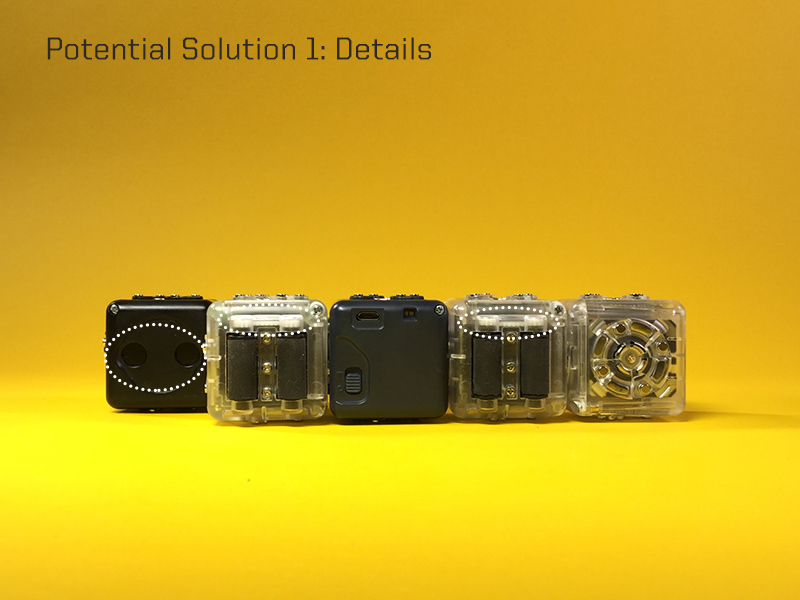
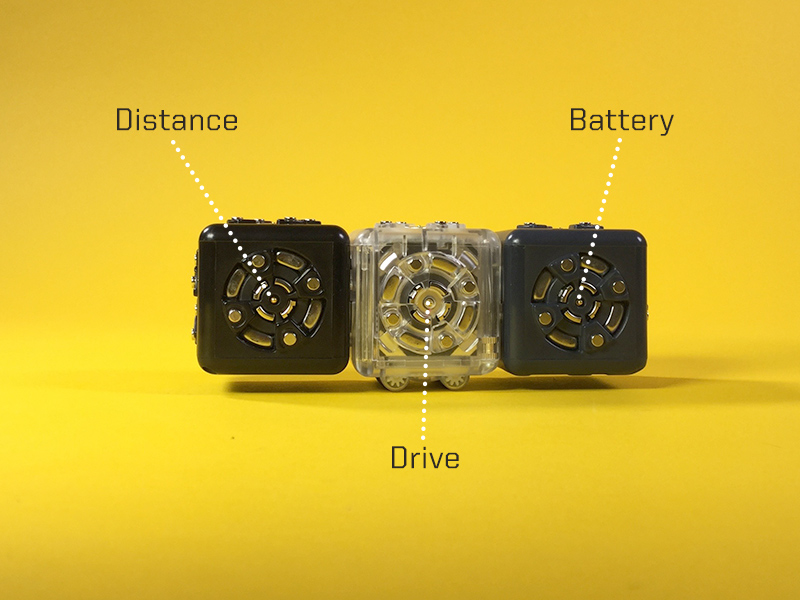
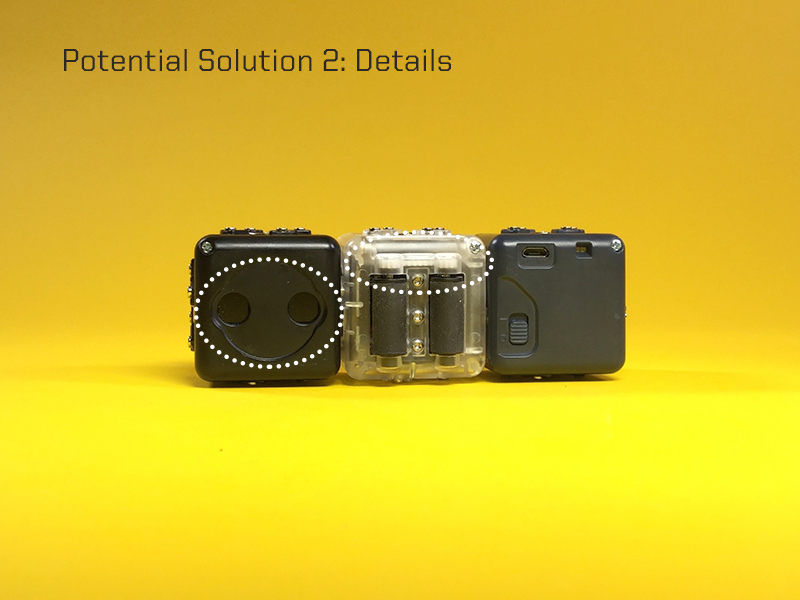

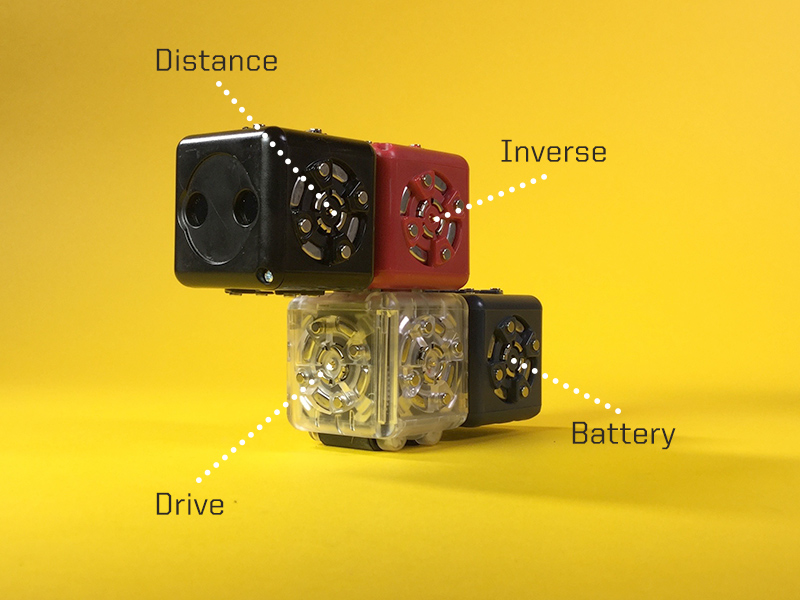
Closure/Evaluation:
-
Time: 2-3 Minutes
- Recap with the students what they learned in this lesson. Review the vocabulary words and what they learned about magnitude and its effect on output. Ask them about how defining properties and characteristics can help them as they build robots.
- Be sure students understand that the magnitude of a Sense can control, or change, the behavior of the robot. Using the Knob cube will allow students to control the behavior of a robot according to the magnitude of a Sense it passes along to the Action. Time: 5 Minutes
- Give students time to record their observations and conclusions in their Robotics Journal or lab notebook. Encourage them to use words and other methods of recording such as charts, sketches, flow charts, mind mapping, etc. Time: 1 Minutes
- Allow time for students to put materials away and plug in the Battery Cubelets for recharging.
End Results:
Students will explore the relationship between magnitude sensing and acting as they continue to gain a better understanding of behavior and data collection.
They will also begin to understand the emergent behavior of their robots. You can remind them that a way a robot behaved was not just because they turned a switch on, but rather that it happened because the Sense cube “told” the Action cube(s) what to do, the Think cube intervened to “tell” the Action cube(s) how to behave, and a Knob Sense cube could also help “tell” the Action cube(s) what to do. This means that they were working in relation to one another.
Optional Quick Write For Prompt and/or Evaluation:
What is the function of the Knob cube? How did this cube work for you in building the two robots?
What To Go To Next:
For More Review:- Sensing and Magnitude A.M.5
Next if Needed:
If your students need a lesson on (or a review of) Cause and Effect and using IF/THEN statements, then use Lesson A.M.7 Cause and Effect. If they need a lesson on Conditionals, then use Lesson A.M.15 Conditionals.
This work is licensed under a Creative Commons Attribution-ShareAlike 4.0 International License.


